7 Crazy Technological Advancements NASA Either Is Or Should Be Working On Right Now
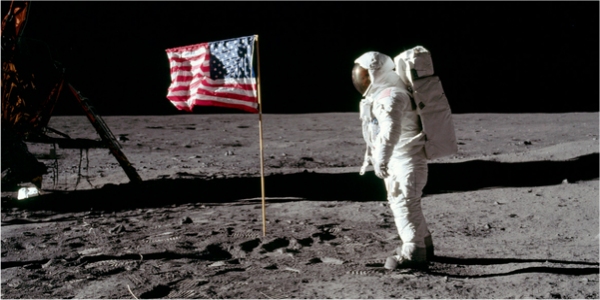
Space... the final frontier... or at least what we know of as the final frontier. It's an awfully big place and it feels like we're not really making the most of it. More appropriately, it feels like the things we could be doing to expand into space (and perhaps beyond?) need a bit of a jump-start and a kick in the gonads. Thankfully, here at Pop Blend, we have a few suggestions floating around that might help the very smart and scientifically enlightened folks at NASA branch out and explore a few ways to make the most of that unused space... in space.
Here are 7 things NASA should be doing right now to prepare for the future of space travel.

New Fuel To Fly Into Space... And Beyond
So rocket fuel (of various types) is the way aeronauts get into space. Burning at various high degrees and usually doing so in two stages; it's easy (relatively) and efficient (for their standards) to put people in space burning off a large tank of fuel in a short amount of time. While this method is great for propelling things into orbit, the problem is that orbit is as far as they go. Need to go further, faster? No luck there, champ. Anything that has to travel further is set on a flight path and slow-burns its way to a destination using small amounts of propellent to guide the course. The major problem with this, of course, is that it takes way too long for things to get where they're going. Wasting a year traveling to a destination like Mars is, well, wasteful.
Now there have been some proposed alternatives to fueling long-travel destinations in space, such as ion thrusters or MPD (magnetoplasmadynamic thruster), but one alternative is using a source that won't run out anytime soon: the sun. Previously, laser-powered propulsion was considered (and has been considered since the late 1990s, as outlined in Space Daily), but it required way too much of a power draw from a fairly large power source. There's no way you can boot-strap a major power-station to some rockets and throw it into space. Instead, it might be more effective to add a third-stage to the blast-off that includes a mix of MPD thrusters and solar-powered laser-propulsion that uses heat magnified by the sun. This should be more than enough to make up for the huge wattage consumption from laser-propulsion. Heck, this technology already exists here on the sandy grounds of Earth. It's called a solar furnace, and it's been outlined by Discover Magazine. Instead of drifting in space after the initial fast burn getting out of Earth's orbit, wouldn't it be a heck of a lot better to travel to a destination not moving at retired-Ford-worker speeds?
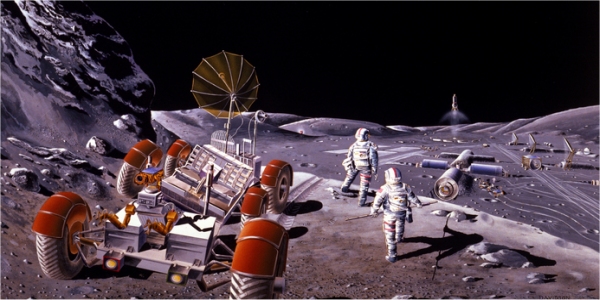
Moon Supply Base
Seems like this would have been done a lot sooner. In fact, I'm not sure why it hasn't been done already, but a supply base on the moon only makes sense. I'm not just talking about another lunar station either, I'm talking about commercial supply bases. That's right, NASA needs to get this thing going as soon as possible; storing necessary supplies, non-perishables and other essentials on the moon. There's a huge opportunity to make fast travel for supply runs quicker and easier by utilizing the moon as a checkpoint, when applicable. The main idea is that this could help fuel competition just like during the era of the space race, only instead of aeranautical international competition we're looking at multinational conglomerate competition. We could see a bunch of companies fight to supply far outposts with supply drops stationed and ready on the moon. “But why?” you ask. Here's why...
CINEMABLEND NEWSLETTER
Your Daily Blend of Entertainment News
Because using their new laser propellant for spacecraft, it'll allow for quicker travel between destinations. Instead of months or years, things could be broken down into weeks. In fact, private space launches to the moon, providing supplies for far-space colonization could work in the same way as the race to provide overnight aerial shipping. With the budding commercial spaceflight talk getting some serious traction, we could see various companies offering services to transfer goods from Earth to the moon for a flat fee. Heck, NASA could even take bids for an official supply route from Earth to the moon and from the moon to various other space installations. The installations could also work to dock smaller supply craft whose only purpose would be to transfer goods from one destination to the other. Automaton supply craft. A moon supply base would also limit the risk of goods having to make the long journey from Earth to Mars, especially when needing to keep an atmospheric processing plant supplied... say what? Check the next page.
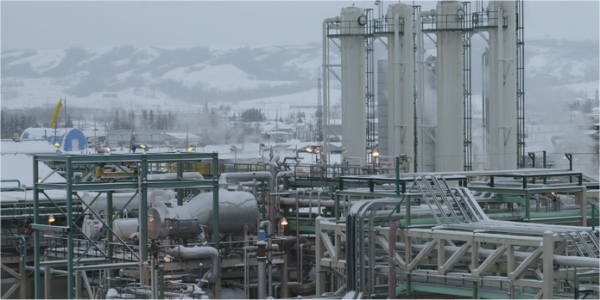
Atmospheric Processing Plants
Colonizing a planet is a pretty big ordeal. It requires a ton of resources, lots of workers, plenty of gear and countless supplies. It's a good thing that a moon base would work as a good intermediary space-port for getting supplies far out to other human occupied colonies, right? Well, before those colonies can get settled in, they'll need to be able to breathe... especially on a place like Mars. Now, when you think atmospheric processing plants the first thing that comes to mind is some sci-fi junk like the structures featured in films like Aliens or Total Recall (the good one, with Arnold Schwarzenegger). But in reality, we already have plants that do just that here on Earth. Really.
We already have manufacturers like Universal Borschi and Inmatec providing global resources for all sorts of oxygen processing for commercial and private sales. The only thing NASA would be doing is working with these companies to get these supplies to a far reaching planet and then setting up these plants to provide oxygen for colonization purposes. The best bet would probably be cryogenic-based oxygen distilleries, as it's less likely people would be willing to steal the supplies and sell it on the intergalactic black market. But seriously, cryogenic-based oxygen supplies would probably provide the safest way to transport oxygen across space and get it setup on a martian planet without worrying too much about hazards from pressurization or atmospheric changes affecting the payload. This is another competitive opportunity for the big corporations to step in and start providing private oxygen supplies for those living on Mars. Just imagine what the stock will look like for the first company to provide portable air filters that happens to be both efficient and sexy looking? Apple will look low class by comparison.
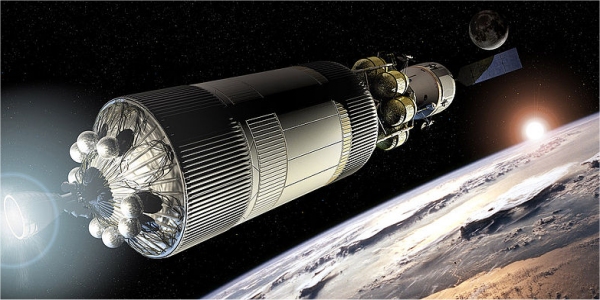
Colonization Crews
Putting atmospheric processing plants on a planet is pretty pointless if you don't have people there. The next step – following the ability to breathe on an uninhabitable planet – is getting people to colonize and terraform the planet for greater population expansion. While NASA already has the Constellation Program outlined (and a budgetary problem nipping away at their heels), they need to get this thing underway, maybe even working with a few private corporations to offer some incentives for speeding up the travel to the far reaches of space (first dibs on pricing the fare of oxygen on Mars?). Hence, the next step that NASA needs to take is sending out colonization crews to Mars. Because... why not? Heck, Dutchman Bas Lansdorp is already taking an edge over NASA by jump-starting an experimental one-way-trip to Mars in 2023, and they still have thousands of people signing up to partake in the space trip, as noted by Mashable.
If Lansdorp and the Mars One mission is still on track, why can't NASA do the same? Heck, it would be completely awesome to have a crew setup all the basics for colonization and community building, and what better group of people to do so than those coming officially out from under the wings of NASA? Besides, you wouldn't want a group of people being sent up regularly via the private sector, or else you might run into that situation like the Golgafrinchan from the Restaurant at the End of the Universe, where there was a colonization ship full of marketers, interior decorators and real estate advisers. I think it might be a heck of a lot more efficient if there were people up there who actually know a thing or two about stabilizing an environment for colonization purposes. Of course, they'll also need plenty of efficient and proper equipment to make that happen... which brings us to the next entry.
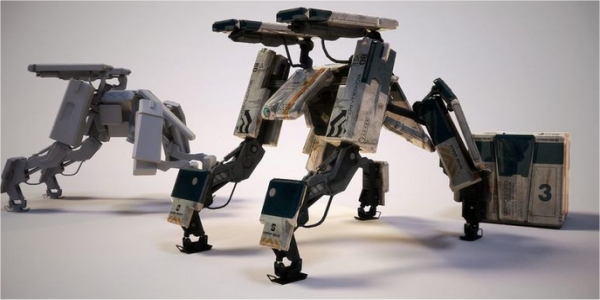
Space Mechs
We hear about mechs often and think of something like Titanfall or Mechwarrior. We instantly scoff and wave away the concept that mechs are anything more than the wet dream of man-nerds and robo-philes. However, mechanized robots are real. In fact, there are already various forms of all-terrain mechs making waves in the robotics space, things like the Boston Dynamics' Wildcat and the BigDog. They're an evolution over the standard threaded robots such as the Rover or the bomb disposal units employed across the globe.
NASA needs to get in good with the industrial mech sector for space-ready robots... and not just the rover kind. We need mechs that won't have their threads getting jammed on a few rocks, or running the risk of tipping over and getting jammed. NASA needs all-terrain mechs like the Gekko from Metal Gear to traverse harsh terrain and work as a tool for construction and exploration alike. While it sounds pretty sci-fi, we're already moving towards bi, tri and quad-pedal mechs for more than just enthusiast designs. It only makes sense that NASA forefronts the use of these robots for more than just dancing and diffusing bombs.

Jumpgate Technology
This is probably where we start getting into the sci-fi territory, but hey, what's a list about things NASA should do without exercising those imagination muscles a bit, eh? Anyway, this might negate a lot of the other stuff on this list but not really. Experimenting with jumpgate or quantum teleportation may seem really far fetched but it may not be as far off into left-field as we all think, considering that quantum physical state data transference has been a prime culprit of research for years. It's finally made some headway when it comes to data transfer, as outlined in a paper by the department of physics in Zurich, Switzerland discussing the teleportation of solid state qubits.
Taking into consideration the advancements of light particle transference (which is now more than a decade old) and qubit transporation, it might be possible to transfer physical particles – along a line of frozen light working as quantum checkpoints thanks to particle accelerators – using qubits that can actually capture and transfer suspended particles. What would be the point? Simple, building jumpgate stations from Earth to Mars and transferring small, particle-dense material from that moon base to Mars. It would be like next-day shipping, except the material/supplies would travel along a light path during certain lunar alignments for quick travel. It could almost be a quantum light transportation equivalent of Tesla's hyperloop transport capsules – only, small transport supplies could be transferred using quantum tech as opposed to a physical tube. Of course, this is something that's probably so far off into the future that it's completely unlikely anyone reading this will see it come to pass within this lifetime, but it's worth thinking about, right? (Image courtesy of Lifeboat.com)

Dead Space Engineer Suits
Let's end with something snazzy, eh? Final bit in this piece is completely fantastical (even more-so than the last entry) but why not? We can have some fun with space travel... it doesn't all have to be laser-beams and qubits. So as we know, the current space suit used for outer-space activities is completely not cool. I mean, it's big, it's bulky, it's just not sexy at all. That's not to mention that if you encounter any sort of hostile alien life-form with the suit you're completely at their mercy... I mean, are they really going to be afraid of a miniature Stay Puff Man in space? Heck no. More than anything, they'll see the big, bulky suit, laugh and proceed to go about their business. As humans, we just can't have that.
NASA needs to start researching suits that will make any sort of hostile alien race wet their space Jimmies like little kids watching Freddy Kruger movies. That's not to mention that all those skinny little scientists who were teased in school will put fear and the spark of death in the eyes of all their detractors, once anyone gets a glimpse of them trotting around in the Dead Space engineer suit. The thing was made to put terror into the baddest lifeforms floating around out there in the deepest, darkest parts of space. And we all know that when the time comes, it's better that the aliens are more afraid of us humans than the other way around. Am I right? Of course I am. Dead Space Engineer suit for the win.
(Dead Space image courtesy of B.A. Warner)
Staff Writer at CinemaBlend.
I Fell Out Of Love With Doctor Who Years Ago, But Disney+'s Callback To A Top David Tennant Episode Might Win Me Back
After Matlock's Shocking Season 1 Finale, I Have Exactly 7 Questions That Need To Be Answered In Season 2
‘It’s Like Dick Van Dyke And David Beckham Had A Baby.’ Adam Levine Debuts New Hair For The Voice Playoffs, But What Color Is That?











